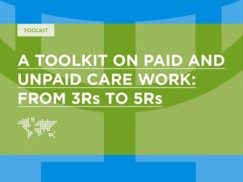New web-based platforms like CanadianNanny.ca provide a window into this previously hidden occupational grouping.
Nannies are a significant part of the unregulated childcare sector in Canada. While recent reforms promise to make regulated childcare affordable to parents, accessibility is likely to remain an issue due to a shortage of staff and childcare spaces. According to Statistics Canada, in 2020, approximately 5% of Canadian families with children under 6 employed a caregiver unrelated to them in their own homes. These unregulated care arrangements are treated as private transactions between parents and caregivers without public or government oversight. Less affordable than other childcare options and unregulated, these nannies embody several axes of social inequality.
This research project seeks to understand how nannies fit into Canada’s childcare ecosystem, and to identify the factors influencing internal stratification among nannies in terms of pay and working conditions
The lack of research into nannies to date was, in large part, due to the informality of in-home childcare that made this population difficult to find and study. New web-based platforms like CanadianNanny.ca provide a window into this previously hidden occupational grouping. By analyzing this data, we are learning about important dimensions that may impact inequity. These include location of work versus home, employee turnover rates, time spent looking for nanny work, and disparities across key demographic and socioeconomic lines.
This research and its dissemination are funded by:

Explore







